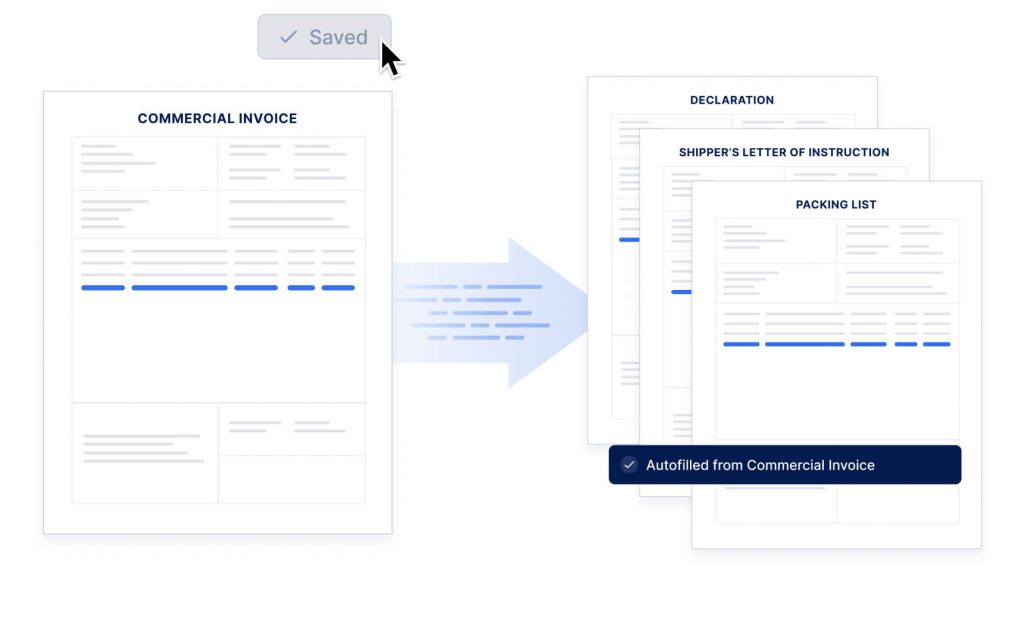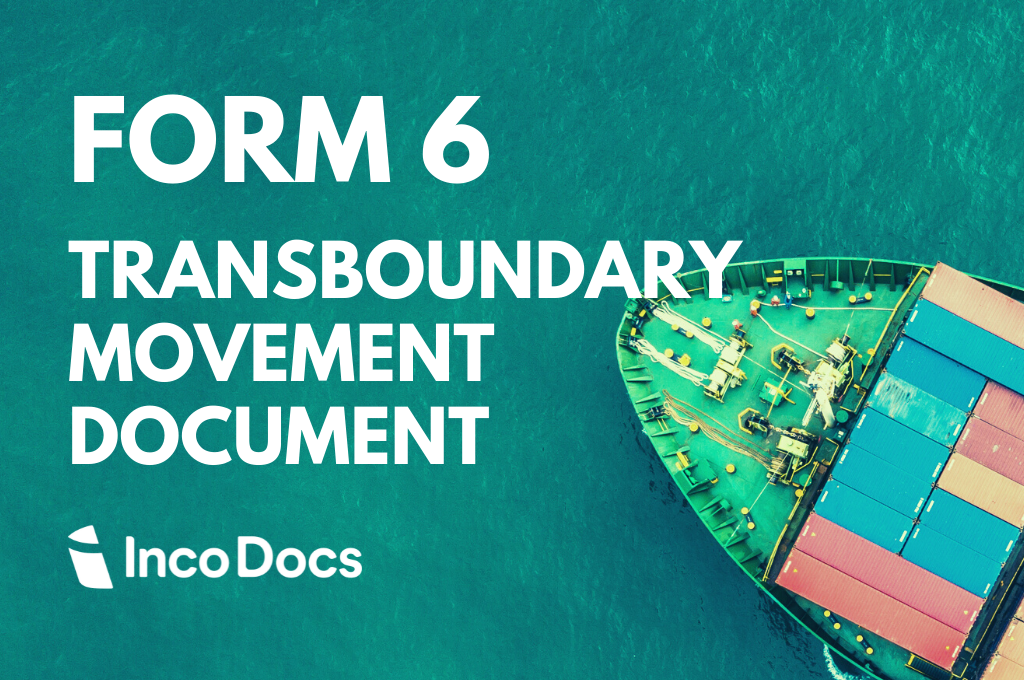How to complete a form 6 document when exporting hazardous and recycled materials
Why are form 6 transboundary movement documents required?
In 1989 the Basel Convention on the control of Transboundary Movements of hazardous wastes and their disposal was adopted. This was in response to the discovery of deposits of toxic wastes that were found in developing countries that were imported from other countries.
New regulations came into effect to protect human health and the environment against the adverse effects of hazardous wastes. Read more about the Basel Convention here.
What is a form 6 transboundary movement document used for in the export process?
A form 6 Transboundary Movement Document is a special document that contains information on the control of transboundary movements of waste destined for recovery options. It will contain information about products and all parties involved with the International logistics of hazardous waste shipments.
How to create and download a Form 6 Transboundary Movement document for exports?
Shippers can use IncoDocs to digitally complete and sign a Form 6 document online, then download a PDF copy to share with other export documentation for each shipment. Shippers can complete form 6 documents in minutes by eliminating data re-entry and clicking to pre fill contact information into the document. Try it yourself with IncoDocs.
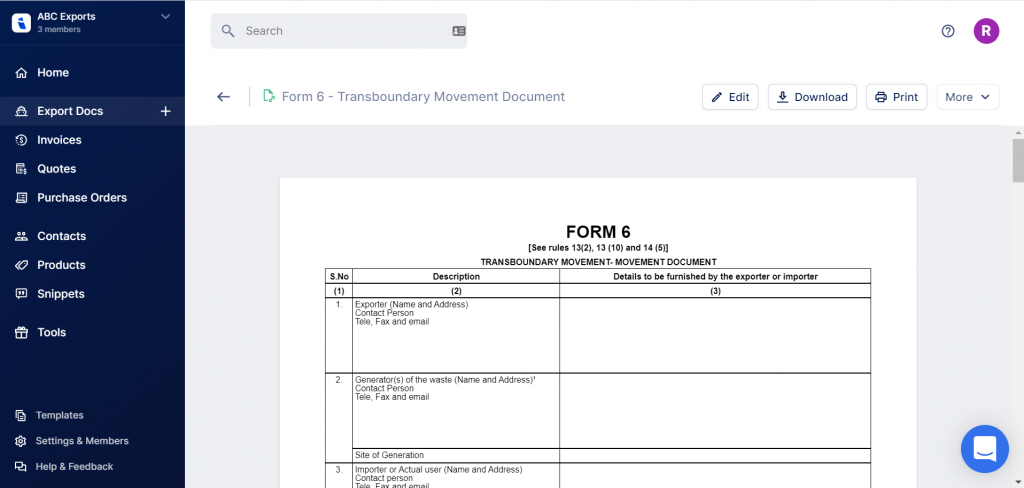
What information is required on a form 6 Transboundary Movement document?
It’s important that shippers include relevant information on the form 6 document so that the relevant customs departments and authorities can check and submit information as required. The details are to be provided by the exporter or importer of goods. Shippers, customs and relevant government departments will maintain records of the transport of these goods for historical use.
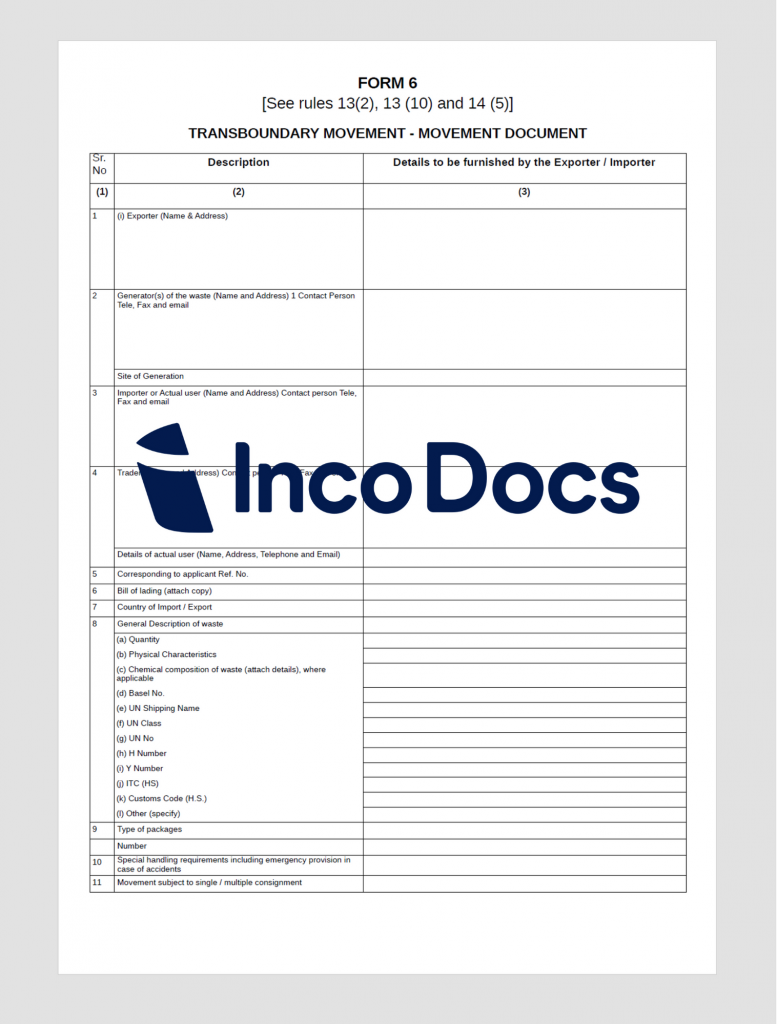
Some of the information to be included on a form 6 Transboundary Movement document includes:
Contact Party information
This includes contact details of all parties that are involved in the movement of such goods. This includes Company name, registered address, company registration numbers, contact names, phone numbers and email addresses. Parties include the exporter, generator of the waste, importer or actual user, trader and transporter(s) of the waste.
Transport details, including:
- Country of Export
- Country of Import
- Means of transport (Sea, Air, Road, Rail or inland waterway)
- Shipment dates
- Port of Loading and Port of Discharge
General description of waste, including:
- Product Quantities
- Physical characteristics
- Chemical composition of waste (if applicable)
- Basel No.
- UN Shipping Name
- UN Class
- UN No
- H Number
- Y Number
- ITC (HS)
- Customs Code (HS Code)
- Kind and Number of Packages
Method of Recovery and R Code:
- R1 Use as a fuel (other than in direct incineration) or other means to generate energy
- R2 Solvent reclamation/regeneration
- R3 Recycling/reclamation of organic substances which are not used as solvents
- R4 Recycling/reclamation of metals and metal compounds
- R5 Recycling/reclamation of other inorganic materials
- R6 Regeneration of acids or bases
- R7 Recovery of components used for pollution abatement
- R8 Recovery of components from catalysts
- R9 Used oil re-refining or other reuses of previously used oil
- R10 Land treatment resulting in benefit to agriculture or ecological improvement
- R11 Uses of residual materials obtained from any of the operations numbered R1 to R10
Additional Information and Declarations
Additional documentation such as a copy of the Bill of Lading (proof of shipment from the carrier) will also be required. Declarations and/or signatures will be required by the Exporter, Importer and Transporter(s) of the waste.
More Information
View more information from the Organisation for Economic Co-operation and Development’s (OECD) Guidance Manual for the Control of Transboundary Movements of Recoverable Wastes.
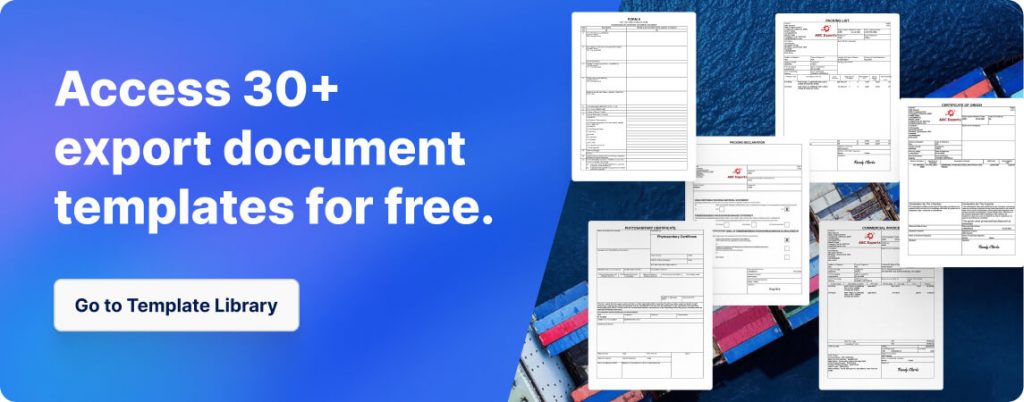
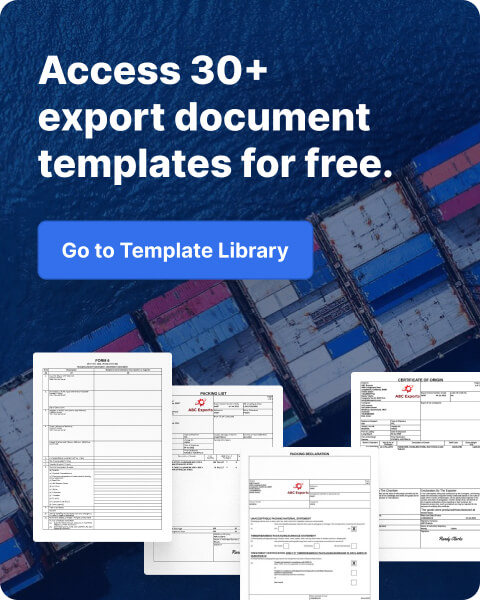
Exporters use IncoDocs to create Commercial Invoices, Packing Lists and other shipping documentation
Exporters use IncoDocs’ cloud shipping document software to create and manage all shipping documentation in 1 place and eliminate manual data re-entry. Users eliminate data re-entry by entering data into 1 master screen then have everything instantly sync to all shipping documents required.
Shipping documents include Commercial Invoices, Packing Lists (for FCL, LCL Air or Consolidated shipments), Verified Gross Mass Declarations (VGM), Shipper’s Letter of Instruction (SLI), Forwarding Instructions (FI), Manufacturer’s Declarations and other shipping documentation.
